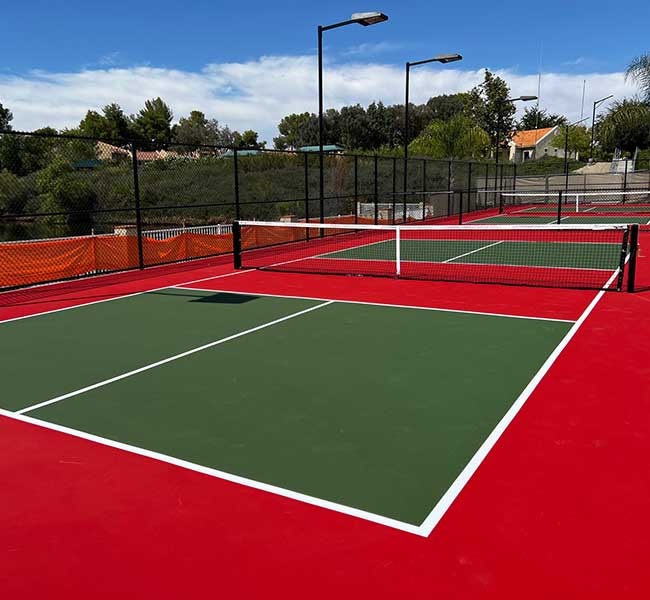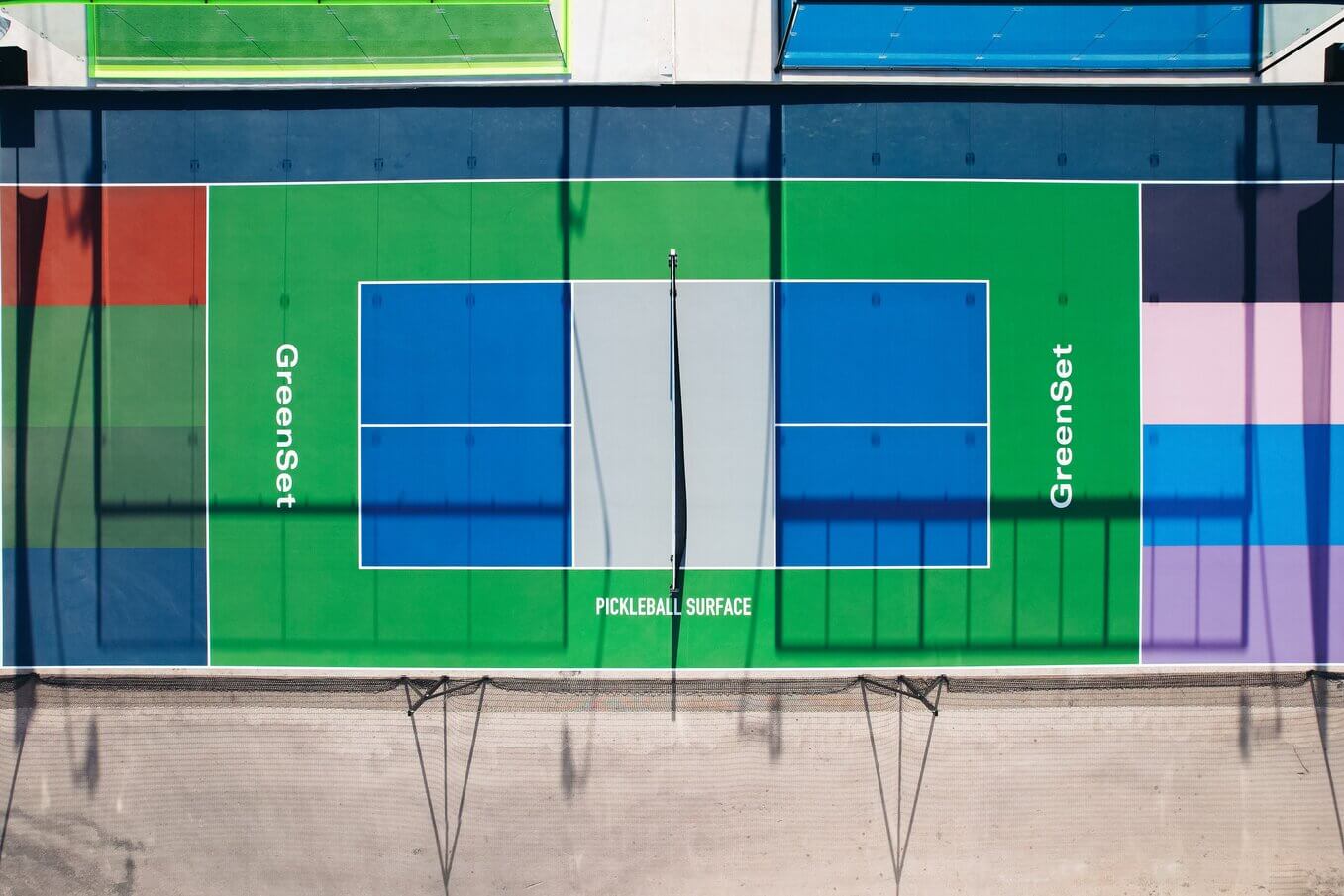Professional Pickleball Court Construction-- From Layout to Setup
Professional Pickleball Court Construction-- From Layout to Setup
Blog Article
Sustainable Practices in Pickleball Court Building And Construction You Ought To Know
As the appeal of pickleball proceeds to climb, so too does the demand for sustainable practices in court building. This strategy not just addresses environmental concerns but likewise enhances the longevity and performance of the courts. From selecting green products to implementing reliable water drainage and energy-saving lights solutions, there are various approaches to take into consideration. Yet, the influence of these techniques extends much past the court itself. Comprehending exactly how each element adds to a much more lasting future welcomes further expedition right into the detailed equilibrium in between leisure growth and ecological stewardship.
Choosing Eco-Friendly Materials
Picking environmentally friendly products is a vital action in the construction of sustainable pickleball courts. The option of lasting materials not only decreases environmental influence yet also improves the longevity and performance of the court. Trick products consist of recycled rubber for the surface area, which uses exceptional sturdiness and shock absorption while drawing away waste from landfills.
Furthermore, utilizing in your area sourced products minimizes transport exhausts and sustains local economic situations. Pickleball court construction. Utilizing native hardwoods for fencing and seats can give a lasting aesthetic while ensuring strength against the components.
Including absorptive products for court structures can even more contribute to sustainability by permitting natural water drain and minimizing overflow. These options not only protect neighborhood ecosystems but likewise promote much healthier play settings.
Effective Drain Solutions
While the choice of environment-friendly materials is crucial, carrying out effective drainage remedies is equally important for maintaining lasting pickleball courts. Proper water drainage not only shields the court surface from water damage however additionally reduces erosion and drainage, advertising ecological integrity.
Efficient water drainage systems can consist of absorptive paving, which allows water to infiltrate the ground rather than pooling externally. This decreases the probability of standing water, which can bring about mold and mildew and various other upkeep problems. Furthermore, integrating purposefully positioned water drainage networks and swales can route excess water far from the court area, making sure a completely dry playing surface and preventing dirt disintegration.
Using native greenery in the landscaping around the courts can further enhance water drainage by soaking up excess water and lowering drainage. These plants call for much less watering and advertise biodiversity, aligning with sustainable practices.
Additionally, it is crucial to frequently preserve the drainage system to ensure its long-term performance. This consists of cleaning debris and monitoring for blockages. By prioritizing efficient drain options, pickleball court producers can significantly add to the sustainability and longevity of the center, eventually benefiting both players and the setting.
Energy-Efficient Lighting Options
As the need for pickleball remains to grow, incorporating energy-efficient illumination options right into court design has ended up being increasingly vital for sustainability. Typical lights systems commonly take in excessive power, adding to higher functional prices and ecological effect. Embracing modern-day, energy-efficient innovations is important for both new buildings and restorations.
LED (Light Emitting Diode) illumination sticks out as a leading option because of its longevity and power cost savings (Pickleball court construction). Compared to standard illumination, LEDs use approximately 75% much less energy and can last approximately 25 times longer, considerably decreasing upkeep costs. The directional nature of LED lights lessens light air pollution, making sure that illumination is focused on the court instead than surrounding areas.

Sustainable Surface Area Alternatives
Discovering sustainable surface choices for pickleball courts has gotten traction among home builders and gamers alike. The focus on green materials not only lines up with the expanding ecological recognition but also enhances the performance and toughness of the courts.
One popular alternative is the use of recycled rubber, which can be sourced from used tires. This material provides excellent shock absorption, reducing the risk of injuries for gamers while advertising sustainability. In addition, modular floor tiles made from recycled plastics supply an additional feasible alternative. These ceramic tiles are simple to replace and install, and their flexibility enables various court setups.
All-natural lawn courts are additionally emerging as a sustainable selection, promoting biodiversity and decreasing the heat island result. Nonetheless, they need normal maintenance and water, which might not line up with all sustainability objectives.

Water Conservation Methods

Another reliable method involves the installment of rainwater harvesting systems. These Extra resources systems keep and collect rain for use in preserving court surfaces and landscape design. This method not just conserves drinkable water but likewise reduces reliance on municipal sources.
In addition, employing drought-resistant landscape design around the courts is important. Indigenous plants call for less water and are better adjusted to neighborhood climate conditions, therefore lowering overall water usage. In addition, utilizing efficient irrigation systems, such as drip irrigation, makes sure that water is supplied straight to plant roots, reducing evaporation and waste.
Final Thought
Including lasting techniques in pickleball court construction substantially adds to ecological conservation and source performance. Making use of environmentally friendly materials, implementing effective drainage solutions, and adopting energy-efficient lights alternatives can substantially minimize environmental effect. Checking out sustainable surface area alternatives and employing water conservation strategies improve the general sustainability of these recreational facilities. By prioritizing these methods, the construction of pickleball courts can straighten with wider environmental objectives while advertising long life and functionality within areas.
As the appeal of pickleball proceeds to increase, so too does the need for sustainable methods in court building and construction.Picking environmentally friendly materials is a crucial click this site step in the construction of lasting pickleball courts. By focusing on energy-efficient lights alternatives, pickleball court producers can add to an extra lasting future while satisfying the requirements of stakeholders and players alike.Integrating sustainable surface area choices not just improves the performance of pickleball courts but also paves the means for applying efficient water conservation techniques.Incorporating lasting methods in pickleball court building considerably contributes to ecological preservation and source effectiveness.
Report this page